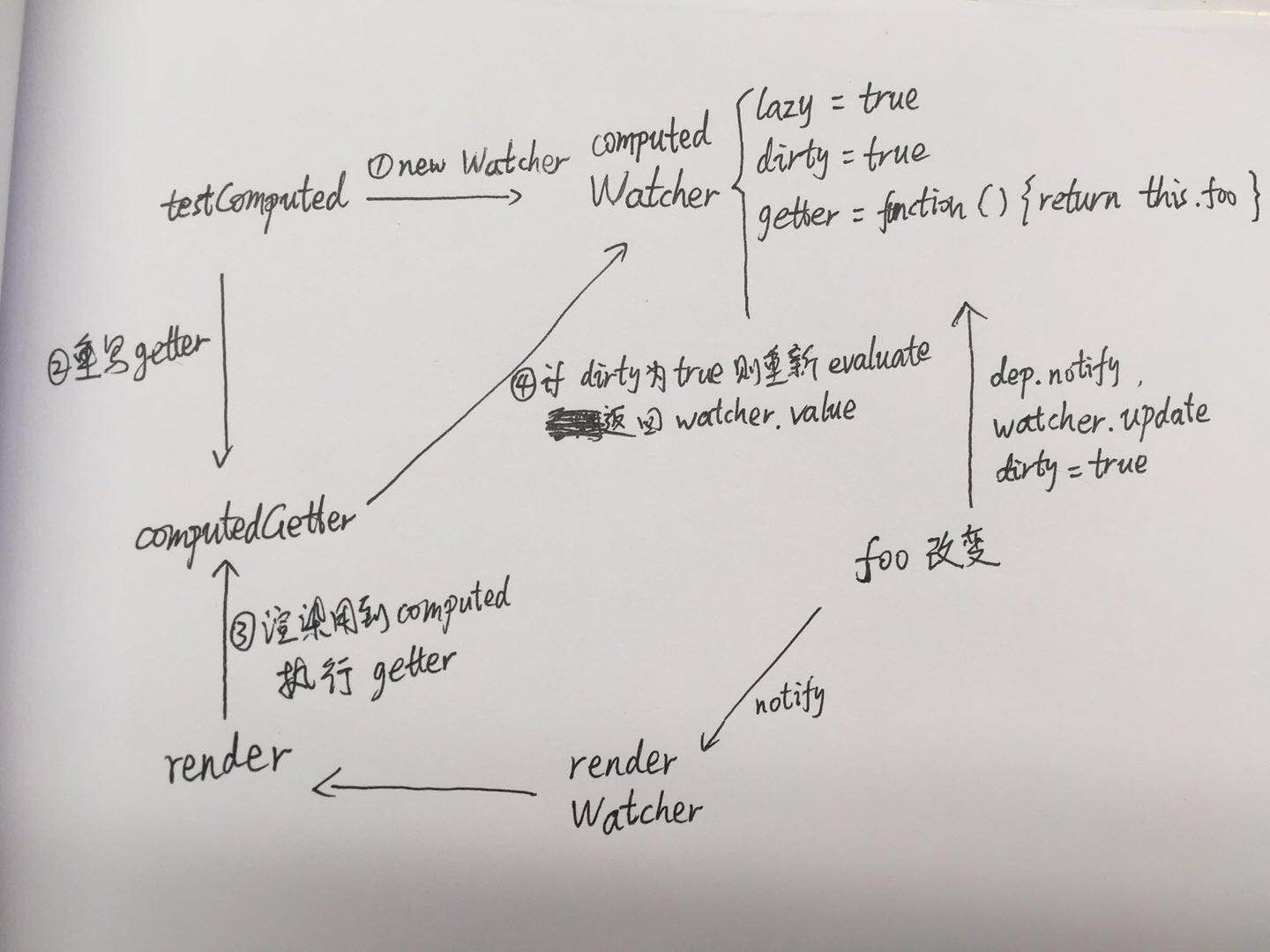Vue响应式之computed
关于 Props
props 的处理与 data 类似,因此不再单独水一篇。
需要弄清的问题
相信看过 Vue 文档的你,在看到计算属性那一章节时,一定会对一句话产生疑问:
计算属性是基于它们的响应式依赖进行缓存的。只在相关响应式依赖发生改变时它们才会重新求值。
为什么?怎么做到依赖改变时才重新求值的?
整理出来就是:
- computed 一般我们写成一个函数,为何可以像一个属性一样去使用它。
- computed 是如何做到相关响应式依赖改变时才去重新计算求值的。
我们还是先假设一个组件:
1 | <template> |
computed 初始化时都发生了什么
我们还是从 initComputed 开始看起:
1 | const computedWatcherOptions = { lazy: true } |
可以看到,initComputed 中主要是 new 了一个 Watcher ,然后执行了 defineComputed 。
在看这个 Watcher 之前,先注意一下这行代码:
1 | const getter = typeof userDef === 'function' ? userDef : userDef.get |
除了定义一个 computed 为函数,我们也可以直接定义其 getter/setter ,也就是说,当我们定义为函数时,其实是定义了这个 computed 的 getter ,这也就解释了第一个疑问。
new Watcher
initComputed 实例化了一个 Watcher 对象,不过这个 Watcher 跟 $mount 时的 Watcher 有点不一样,computed 的 Watcher 传入了 { lazy: true } 选项,这就导致实例化后不会马上执行其 getter ,也就是依赖不会马上被这个 watcher 收集到,那么收集依赖的过程应该是下一步,defineComputed 中进行了。
defineComputed
1 | const sharedPropertyDefinition = { |
在这个函数中,最后在 vm 上定义了对应 computed ,而 getter ,在不是 SSR 的情况下是用 createComputedGetter(key) 来代替。
我们来看看 createComputedGetter 函数做了什么:
1 | function createComputedGetter (key) { |
看了这段好像看不出什么端倪,让我们从 watcher.evaluate 看起。
首先,watcher.dirty 是为 true 的,因为在 Watcher 中初始化时 watcher.dirty 是赋了 watcher.lazy 的值。
所以,如果有在模板中用到 computed ,则一开始就会进行一次 evaluate :
1 | evaluate () { |
在重新评估 computed 值的过程中,会执行 watcher.get ,而在 get 函数中,会尝试去执行 getter :
1 | try { |
也就是我们所定义的函数:
1 | testComputed () { |
在我们所定义的 getter 里,引用了 this.foo ,因此会去执行 this.foo 的 getter 。
在之前阅读 data 响应式时了解到,Vue 重写了 data 的 getter/setter ,其中,在 getter 中有这么一段:
1 | if (Dep.target) { |
在 this.foo 的 getter 中会执行 dep.depend() ,也就是会向 this.testComputed 的 watcher 中添加 this.foo 的 dep 依赖。
因此,在 this.foo 改变时,会调用 this.testComputed 的 watcher 的 update 方法,具体就是把 dirty 置为 true :
1 | update () { |
然后,在 render 的过程中,执行 this.testComputed 的 getter ,也就是 computedGetter ,由于 dirty === true ,会重新执行一次 evaluate 。
如此,便达到了响应式依赖改变时才重新计算值,而不会重复计算的效果。
大致流程

初始化时,按照 ①②③④ 步骤执行。
而当 foo 改变时,则会执行 dep.notify :
- 通知 computed Watcher 把
dirty置为true - 通知
$mount时的 Watcher 执行updateComponent函数进行渲染,即执行 ③④ 步骤